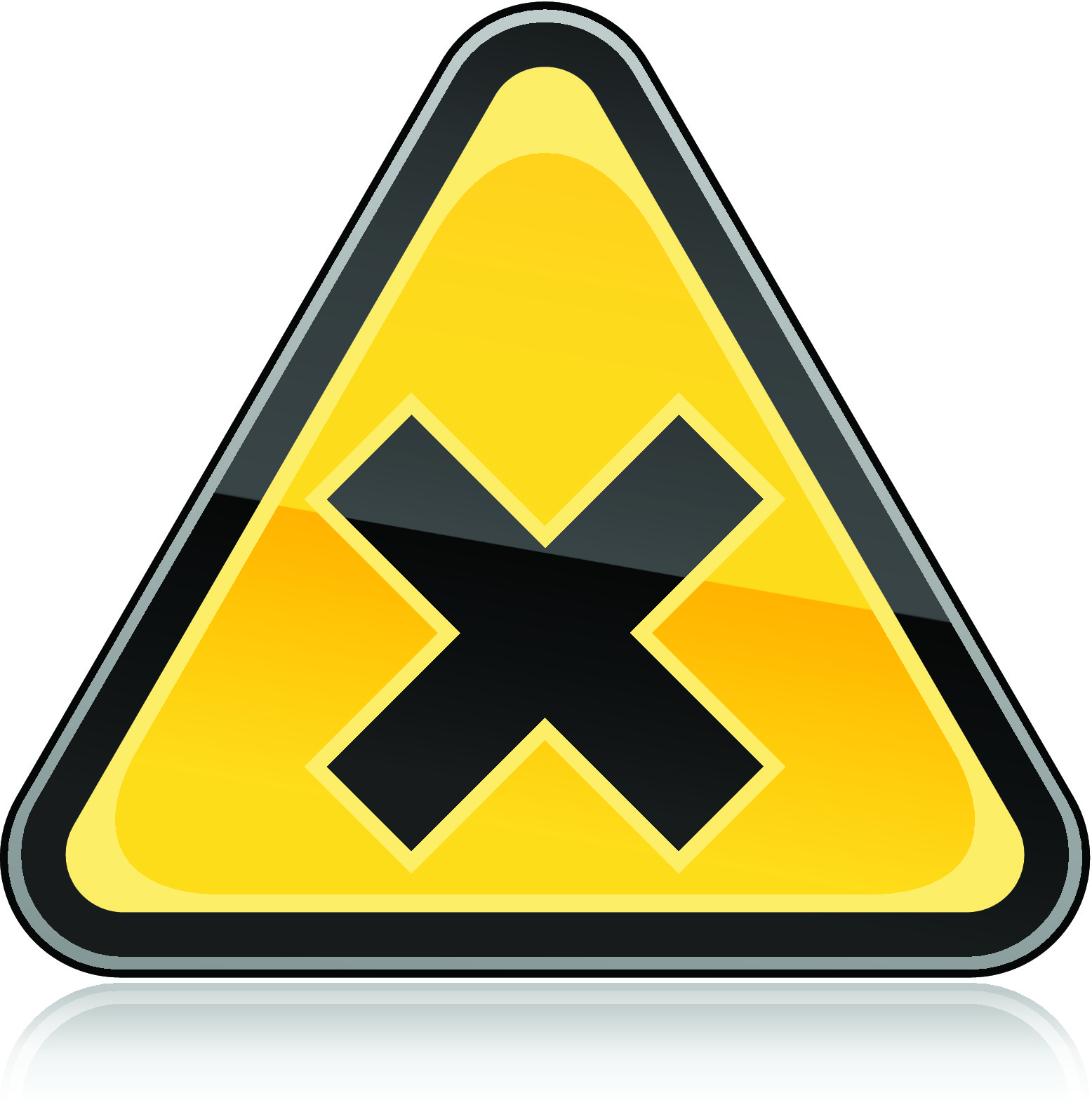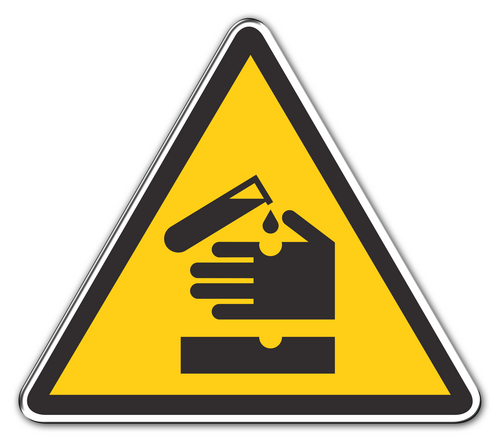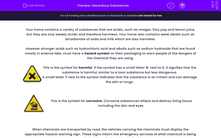Your home contains a variety of substances that are acidic, such as vinegar, fizzy pop and lemon juice, but they are only weakly acidic and therefore harmless. Your home also contains weak alkalis such as bicarbonate of soda and milk which are also harmless.
However, stronger acids such as hydrochloric acid, and alkalis such as sodium hydroxide that are found mostly in science labs, must have a hazard symbol on their packaging to warn people of the dangers of the chemical they are using.
 This is the symbol for harmful. If the symbol has a small letter 'h' next to it, it signifies that the substance is harmful, similar to a toxic substance but less dangerous.
This is the symbol for harmful. If the symbol has a small letter 'h' next to it, it signifies that the substance is harmful, similar to a toxic substance but less dangerous.
A small letter 'i' next to the symbol indicates that the substance is an irritant and can damage the skin or lungs.

This is the symbol for corrosive. Corrosive substances attack and destroy living tissue including the skin and eyes.
When chemicals are transported by road, the vehicles carrying the chemicals must display the appropriate hazard-warning sign. These signs inform the emergency services of what chemical is being carried and how it should be dealt with.
If large amounts of acid are released, the fire brigade would add lots of water to dilute the acid and make it less harmful.
Let's have a go at some questions now.








